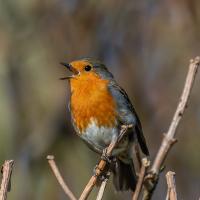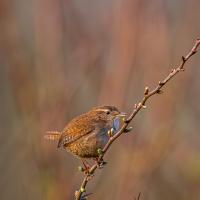Given the instructions to avoid going out, now is a good opportunity to photograph the birds in your garden – they are truly beautiful, each species has its own special charm, and they make great subjects. But getting a high-impact shot can be difficult – many species are shy of allowing humans into close contact and immediately fly off if approached. And most birds are actually quite small, so getting a high resolution shot which includes good feather and eye detail requires a really good lens, typically something in the range of 200mm – 500mm (either that or lots of luck!). If you don’t have a really long lens, a “teleconverter” (sometimes called a “multiplier” or “lens extender”) can be an economical way of increasing the focal length of a lens – usually by a factor of 1.4x or 2.0x – so a 200mm lens with a 2.0x converter would be equivalent to a 400mm lens. Their disadvantage is a reduction in the light entering the camera so need a larger aperture setting or an increase in the ISO setting to compensate. There are often good deals available on ebay or amazon.
Having garden feeders to encourage the birds into your garden will provide a ready source of talented models for your images – robins in particular are very approachable and even larger birds such as gulls will allow reasonably close contact when food is on offer. .
Patience, quiet, and minimal movement will prove helpful in “getting the shot”, whilst the guidelines on composition given in an earlier article apply just as with a landscape image, so the “Rule of Thirds” is a good starting point.
Whether to go for the really close-up image or a more distant shot with a landscape or seascape environmental context is up to you – I have provided several images to show the sort of shot possible. It helps the impact if the background can be kept relatively uncluttered (if not totally defocussed) so the viewer’s attention is drawn to the bird – and whilst movement in flight may render the wings out of focus, it is vital that the eye stays in sharp focus, ideally with that little catchlight sparkle too. So, camera settings of a wide aperture (say f2.8- f4.0), ISO at 200 or 400 for maximum quality and reduced noise, and a fast speed setting of at least 1/500th are suggested. And as a “piece de resistance”, the bird in action, singing, catching its prey or feeding its young will make for a stunning image, if not a masterpiece. Good luck with your photographic efforts – and be aware that you’ll likely take dozens of shots before getting a shot that really pleases. Bird photography is not easy!
Chris Blyth


